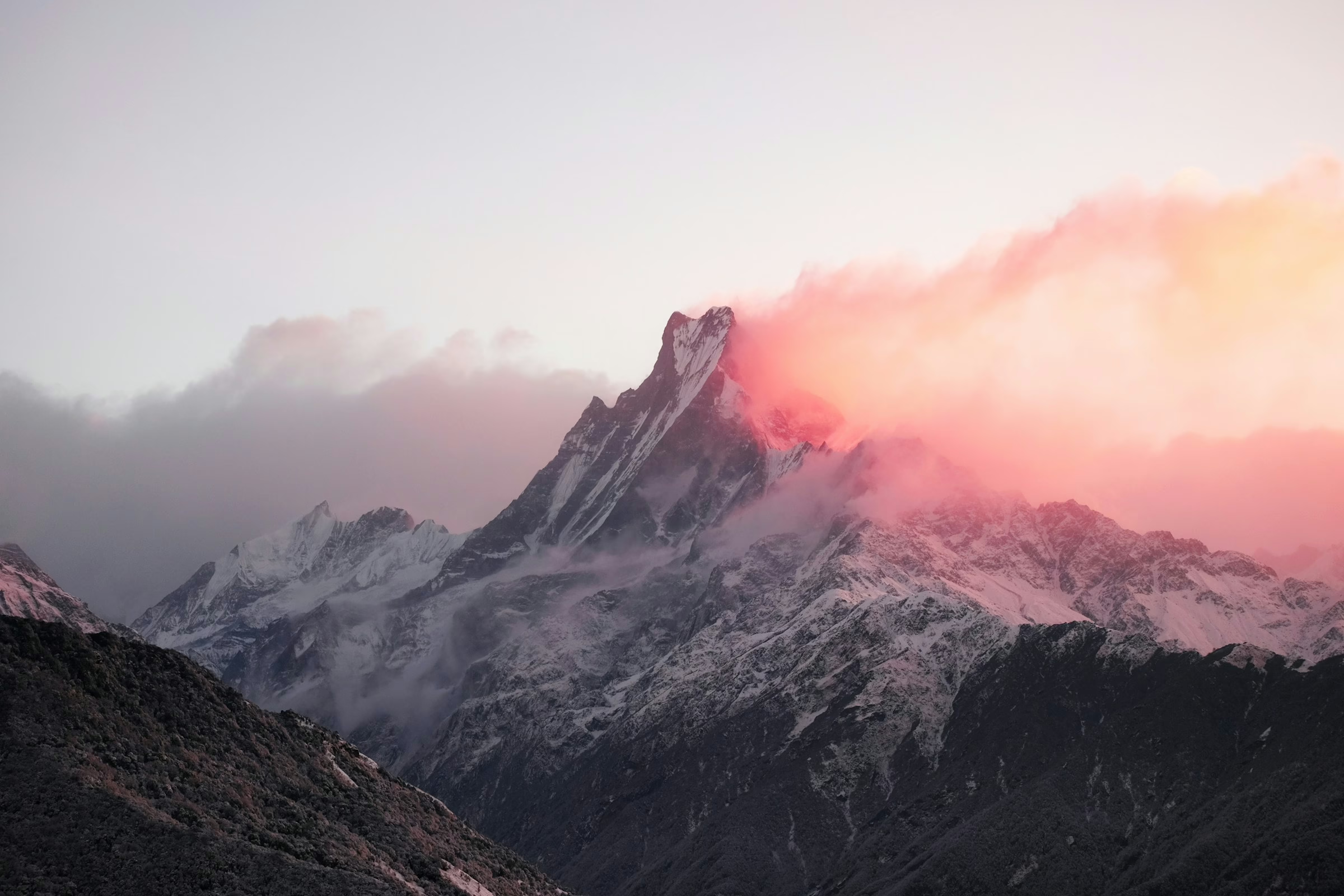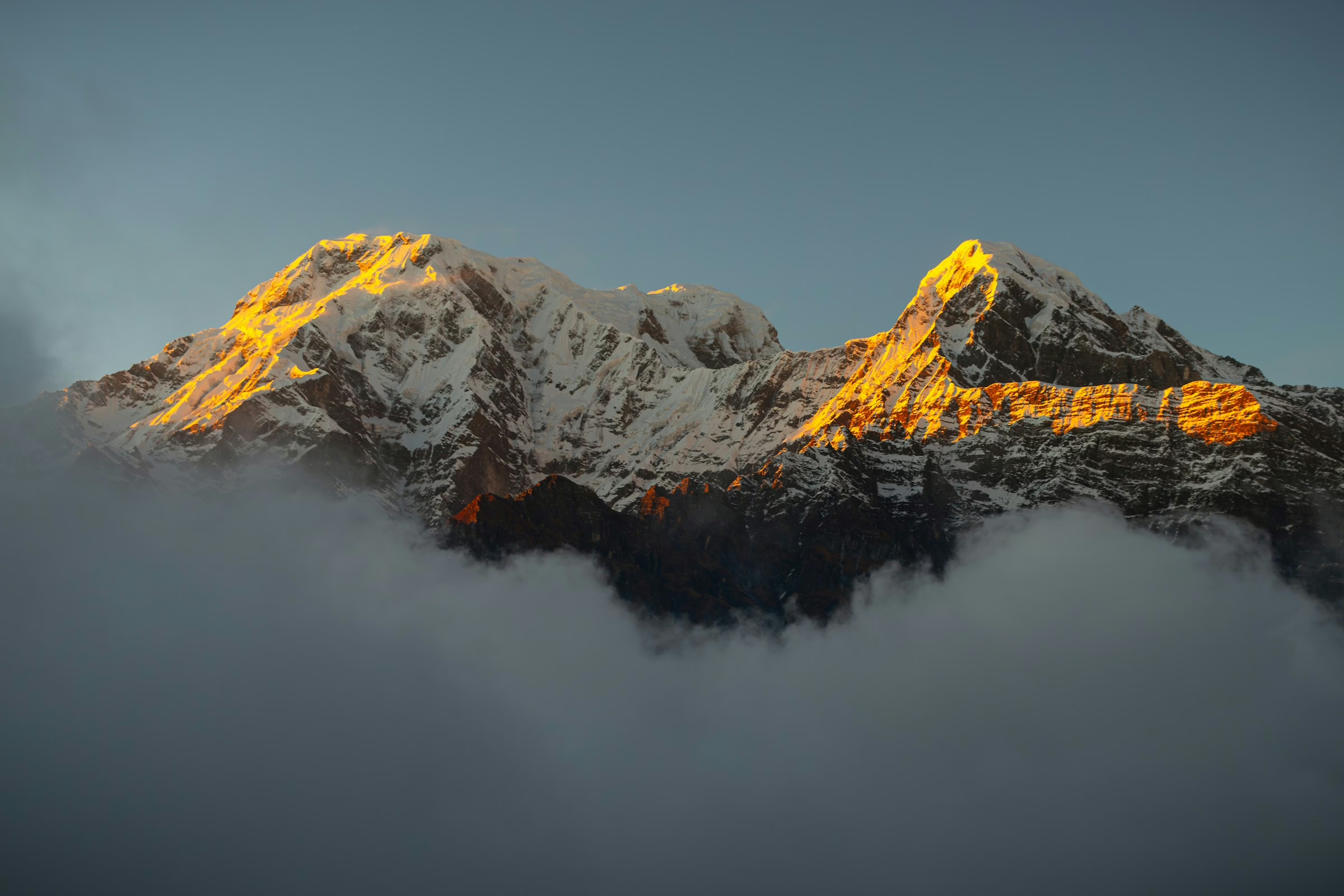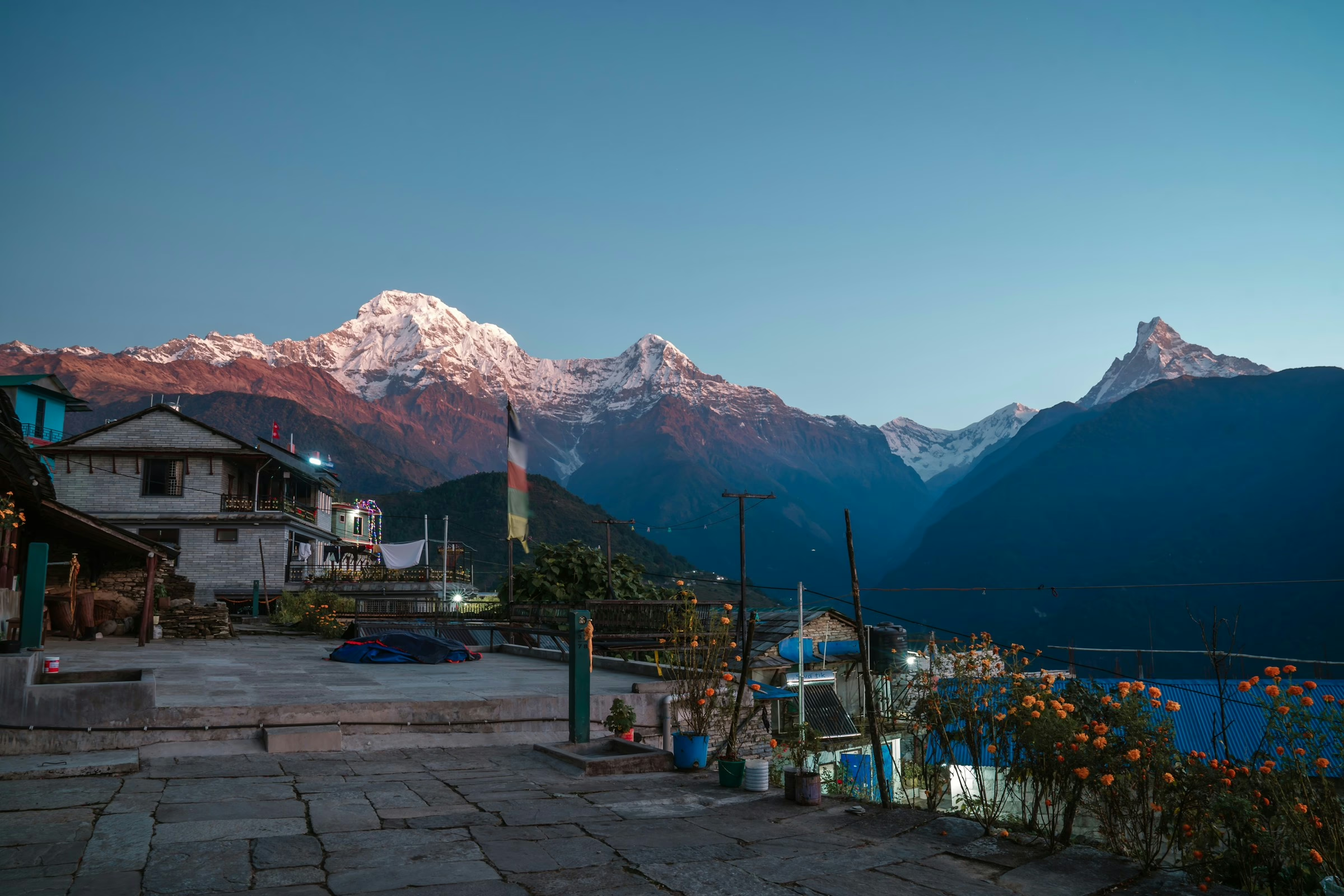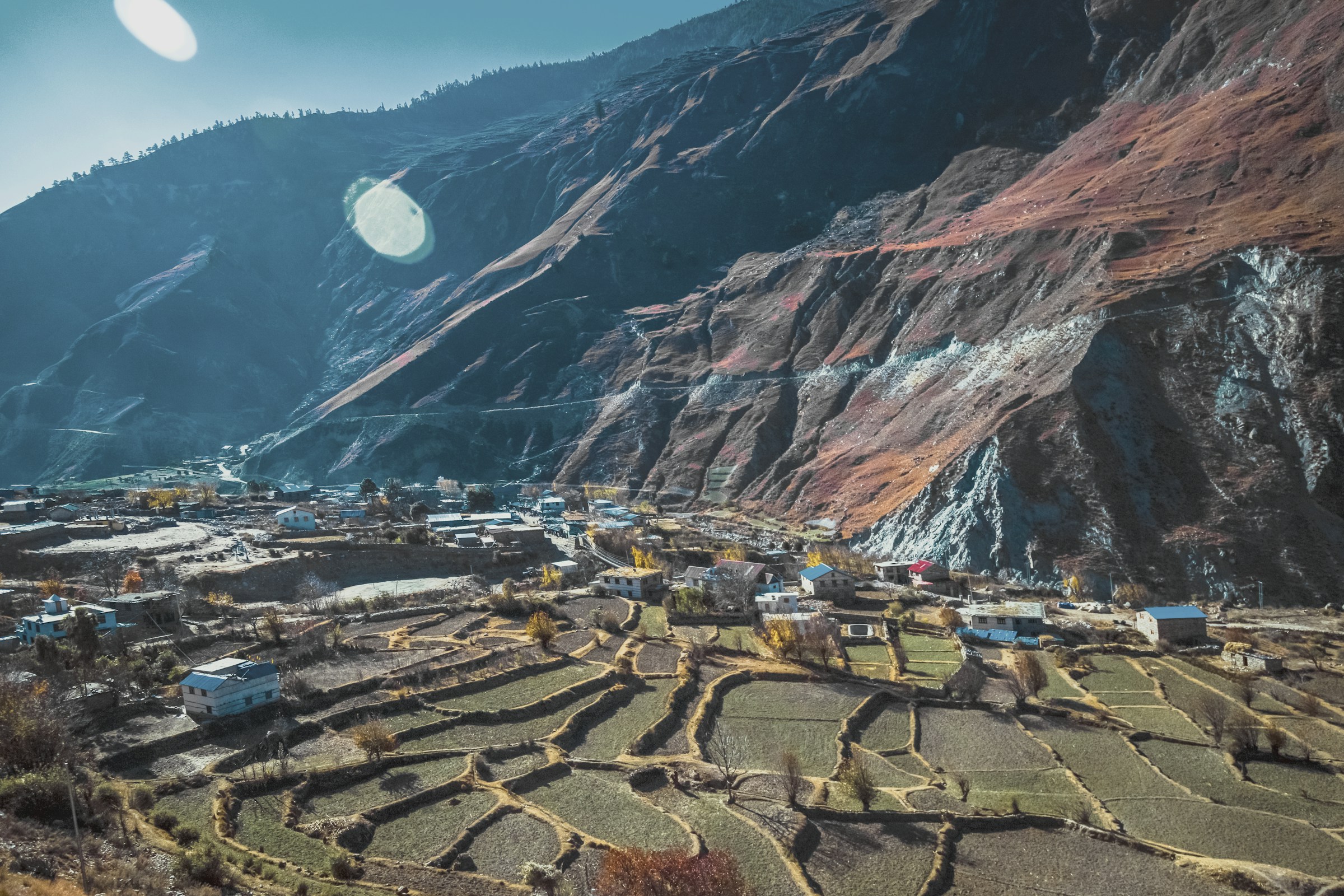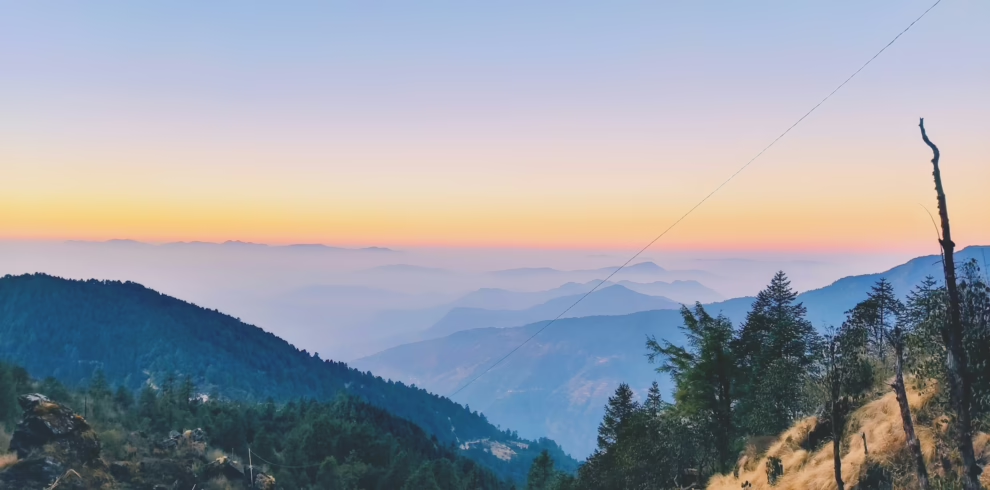Looking for a trek that delivers it all? The ABC with Poon Hill and Mardi Himal Trek is a once-in-a-lifetime journey that weaves together three of Nepal’s most iconic trails—Ghorepani Poon Hill, Annapurna Base Camp (ABC), and Mardi Himal—into one seamless adventure.
This route is perfect for trekkers eager to soak in jaw-dropping mountain views from both lower and higher altitudes. You’ll experience everything from the lush rhododendron and oak forests of Poon Hill to the icy glaciers and dramatic landscapes near Annapurna Base Camp. The Mardi Himal section adds a more off-the-beaten-path flavor, giving you a taste of true Himalayan wilderness.
As you ascend, you’ll be treated to ever-expanding views of some of the world’s most majestic peaks, including Annapurna, Dhaulagiri, Gangapurna, and Manaslu. Along the way, you’ll pass through terraced farmlands, vibrant villages, and serene alpine forests—each step bringing you closer to the heart of Nepalese mountain culture.
Whether you’re a seasoned trekker or a bold first-timer, this combination trek offers a rich mix of nature, culture, and adventure—all in one unforgettable package.
17 days / 16 nights ABC Trek with Poonhill & Mardi Himal trip
Trek into the Timeless Beauty of the Annapurna Region
Highlights
- Enjoy free time exploring Pokhara’s top attractions, including the World Peace Pagoda, Devi’s Fall, Phewa Lake, and the International Mountain Museum.
- Discover the scenic beauty of the Annapurna region—lush rhododendron forests, terraced fields, diverse wildlife, and traditional Gurung villages.
- Witness stunning sunrises over the Dhaulagiri and Annapurna ranges from the famed Poon Hill viewpoint.
- Relax in the natural hot springs of Jhinu Danda while enjoying panoramic views of the Annapurna, Dhaulagiri, Nilgiri, and Machhapuchhre peaks.
- Marvel at the full panorama of the snow-capped Himalayas from Annapurna Base Camp.
- Visit three iconic base camps in one trek—Annapurna, Machhapuchhre, and Mardi Himal.
- Hike to Mardi Himal’s base for sweeping views of the pristine Himalayan peaks.
- Admire spectacular vistas of Dhaulagiri, Annapurna II, III, IV, South, Hiunchuli, and Machhapuchhre.
- Explore Siding village to experience the local culture, lifestyle, and traditions.
Itinerary
Upon your arrival at Tribhuvan International Airport, our representative will greet you and transfer you to your hotel in a private tourist vehicle. Once you're settled at the hotel, we will schedule a trip briefing at the hotel lobby or restaurant.
After an early breakfast, you'll take a tourist bus on a 7–8 hour journey to Pokhara, the starting point of your Mardi Himal and ABC Trek via Poon Hill. Along the way, enjoy views of waterfalls and the scenic Trishuli and Marsyangdi Rivers flowing beside lush, rocky hills. Alternatively, for an additional fee, you can opt for a 25-minute flight from Kathmandu to Pokhara, allowing more time to explore the valley. Pokhara is known for its beautiful lakes—Begnas, Fewa, Rupa, Dipang, Maidi, Khaste, Gunde, and Nyureni—and stunning views of the Annapurna, Machapuchare, Dhaulagiri, Manaslu, and Lamjung Himal ranges.
After a hearty breakfast in Pokhara, you’ll head to Birethanti, the official starting point of the Mardi Himal and ABC Trek via Poon Hill. The trail passes through Nayapul and follows an easy path along the Bhurungdi Khola, offering views of scenic terraced farms. You’ll pass through the villages of Sudame, Hile, and Tikhedhunga before beginning a steep ascent via stone steps to Ulleri, a large Magar village. From Ulleri, you’ll enjoy views of Mount Hiunchuli and Annapurna South.
The trail from Ulleri to Ghorepani ascends gradually, offering views of snow-capped peaks like Annapurna, Machhapuchhre, and Hiunchuli. As you walk through lush rhododendron forests, you may encounter diverse wildlife, fresh springs, and rivers. The next destination is the scenic hilltop village of Ghorepani, which offers stunning views of Dhaulagiri, Tukuche, Dhampus, Nilgiri, Annapurna, Barah Shikhar, and Machhapuchhre. A popular activity from the Ghorepani Guesthouse is the early morning Poon Hill hike, where you'll witness a breathtaking sunrise and panoramic Himalayan vistas.
Early in the morning, you’ll hike up Poon Hill to witness a stunning sunrise over the Himalayan range, including Annapurna, Dhaulagiri, Nilgiri, and Machhapuchhre. After enjoying the view, you’ll return to your lodge for breakfast before continuing the ABC and Mardi Himal Trek toward Deurali. The trail from Deurali to Banthanti winds through forested paths where langurs and monkeys are often seen. From there, you’ll descend to Tadapani, taking in beautiful mountain views along the way, and spend the night there.
"After breakfast, you’ll begin the Mardi Himal and ABC Trek via Poon Hill, heading from Tadapani toward Chomrong. The trail descends through rhododendron forests and crosses the Kimrong River before reaching the Gurung village of Ghandruk. From there, a steady ascent leads to Chomrong, offering stunning views of Annapurna South and Fishtail along the way. Perched on the slope of Annapurna, Chomrong is a popular stop for trekkers en route to Base Camp. This large hillside village is home to welcoming Gurung residents, and you'll spend the night in a local teahouse or trekking lodge.
Today’s trek on the ABC route via Poon Hill and Mardi Himal will be slightly longer. After a hearty breakfast in Chomrong, you'll descend stone steps to cross the Chomrong Khola via a suspension bridge. From there, the trail climbs through terraced fields and lush hills to the ridge-top village of Sinuwa, which offers stunning views of Mt. Fishtail. The journey continues to Khuldighar, followed by a descent through dense bamboo, rhododendron, and oak forests near the Modi River to reach Bamboo. A steady uphill walk along the Modi Khola then brings you to the forested village of Dovan.
Today’s trek on the ABC via Poon Hill with Mardi Himal route takes you from Dovan to Deurali. The trail winds through rhododendron and bamboo forests, dotted with waterfalls. As you reach Himalaya, the dense forest opens up, revealing stunning views of the glacier river. Descending along the Modi Khola, you’ll pass through a narrow gorge before climbing steeply through a drier forest to Hinku Cave. The path then dips and rises again to Deurali—arguably the most scenic stretch of the day. With sparse vegetation, you’ll enjoy clear views of the valley, river, and dramatic granite cliffs adorned with thin waterfalls. Deurali makes for a beautiful overnight stop.
After a challenging ascent from Deurali along a riverbed, you’ll reach Machhapuchhre Base Camp, where you’ll be rewarded with panoramic views of Annapurna, Machhapuchhre, Gangapurna, Hiunchuli, and more. From there, the trail heads northwest to Annapurna Base Camp (ABC). This section is wider, sparsely vegetated, and prone to avalanches, so caution is essential. At ABC, you’ll be surrounded by breathtaking views of Hiunchuli, Annapurna South, Annapurna I, Khangsar Kang, Gangapurna, Annapurna III, and Machhapuchhre. The stunning beauty of the snow-covered peaks will make this a day to remember. You’ll spend the night at Base Camp.
After witnessing a stunning sunrise at Annapurna Base Camp, you'll begin your descent through the Annapurna Sanctuary. Following the same route back, you'll pass Machhapuchhre Base Camp, Deurali, Himalaya, Bamboo, and Khuldighar before reaching Sinuwa. Though you retrace your steps, the return journey offers a fresh perspective as you move through alpine valleys, tranquil villages, and lush forests. The descent from high altitude also makes the terrain easier to navigate. Once in Sinuwa, you'll check into a comfortable teahouse and can relax for the evening.
Today, you’ll leave Sinuwa and begin the final leg of your trek toward Mardi Himal, heading to Landruk. The trail descends to a suspension bridge before climbing up to Chomrong. From there, a short walk brings you to Jhinu Danda, known for its relaxing natural hot springs. After enjoying a soak, you’ll continue toward New Bridge and then on to Landruk. Along the way, you'll pass through lush forests, spot various bird species, encounter small waterfalls, and enjoy the tranquil natural beauty.
From Landruk, you’ll ascend steeply through pine and juniper hamlets to reach Forest Camp, a quiet, secluded spot with only a few simple teahouses. As you climb, the high peaks become increasingly visible. The trail continues through moss- and lichen-draped forests, dominated by rhododendron trees, toward Low Camp via the ABC and Mardi Himal Trek with Poon Hill route. From here, you’ll enjoy stunning views of Annapurna, Machhapuchhre, and Dhaulagiri. Like Forest Camp, Low Camp offers a few basic lodges and a peaceful atmosphere enhanced by sweeping views of the Himalayan valley.
Your Mardi Himal and ABC Trek via Poonhill continues from Low Camp to High Camp, passing through Badal Danda. The ascent begins with a one-hour climb through rhododendron forests to reach Badal Danda. Though the trail is challenging, you’ll be rewarded with stunning views of Machhapuchhre, the Annapurna Range, and Mardi Himal. As you gain altitude, the ridge narrows, revealing expansive valleys on both sides—Modi Khola Valley to the left, leading to the Annapurna Sanctuary, and Mardi Khola and Seti river valleys to the right. On clear days, the Pokhara Valley is also visible. You'll follow the ridgeline to reach High Camp, where you might spot Nepal’s national bird, the colorful Daphne, along the way.
You'll rise early to witness the sunrise over the mountains—one of the most memorable and challenging parts of your ABC with Poon Hill and Mardi Himal Trek. The trail to Mardi Himal Base Camp involves steep, uneven steps and several quick ascents, making it more demanding than expected. After about five hours of trekking, you'll reach the base camp at 4,500 meters, where the achievement is matched only by the stunning scenery. The panoramic views of Mt. Machhapuchhre, Mardi Himal, Annapurna I (8,091m), Annapurna III (7,555m), and Gangapurna are truly captivating. After soaking in these breathtaking sights, you’ll descend to Badal Danda, where clouds drift around you, creating a magical atmosphere.
After enjoying the stunning Himalayan views and unique local ecology at Badal Danda, you’ll begin your descent to the scenic village of Siding. Rather than returning via Forest Camp, the Mardi Himal Trek with ABC via Poon Hill follows an alternate route to Siding. After lunch there, you’ll take a shared jeep back to Pokhara. You’ll have the evening free to relax, go boating, or explore the beautiful lakeside area.
After breakfast, a deluxe tourist bus will take you from Pokhara to Kathmandu via the Prithvi Highway—a journey of 205 kilometers that takes around 7 to 8 hours, depending on traffic. Along the way, you'll pass through diverse landscapes and lively towns like Damauli, Dumre, and Mugling. In the evening, you'll celebrate the successful completion of your Annapurna Base Camp via Poon Hill with Mardi Trek with traditional Nepali cuisine and live ethnic music. It's also a great time to shop for souvenirs or capture final memories with photos.
We typically arrange your airport transfer three hours before your departure. If you have extra time, we can organize optional side trips or you’re welcome to explore on your own.
Includes/Excludes
Cost Included
- International airport pickup and drop-off
- 2 nights standard accommodation in Kathmandu with breakfast (BB basis)
- 2 nights standard accommodation in Pokhara with breakfast (BB basis)
- Annapurna Conservation Area Permit (ACAP)
- TIMS card (Trekking Information Management System)
- Licensed, English-speaking local guide (including their food, accommodation, insurance, salary, and equipment)
- Three meals per day (breakfast, lunch, dinner) during the ABC via Poon Hill with Mardi Himal trek
- Accommodation in teahouses/lodges during the trek
- Tourist bus tickets between Kathmandu and Pokhara (round trip)
- Private Jeep: Pokhara to Birethanti (trek start point) and Siding to Pokhara (trek end point)
- Duffle bag for gear (porters can carry if hired)
- Farewell dinner before departure
Cost Excludes
- International airfare and Nepal entry visa fees
- All meals and accommodation in Kathmandu before/after the trek
- Lunch and dinner in Pokhara
- Porter service (optional, available upon request during booking)
- Extra nights and meals in Kathmandu or Pokhara due to early arrival, delayed departure, or early trek return
- All drinks (hot, soft, alcoholic, bottled water)
- Travel insurance (must include emergency high-altitude rescue and evacuation)
- Personal trekking gear and emergency evacuation costs
- Expenses from itinerary changes due to unforeseen circumstances
- Gratuities for trekking staff (expected at the end of the trek)
FAQs
Yes. Trekkers are required to obtain the following permits:
- Annapurna Conservation Area Permit (ACAP)
- TIMS Card (Trekkers’ Information Management System)
Absolutely. The trail features lush rhododendron forests, terraced rice fields, and stunning panoramic views from Poon Hill, Mardi Himal Base Camp, Annapurna Base Camp, and Machhapuchhre Base Camp. You’ll also pass through culturally rich villages like Landruk, Ghandruk, and Siding.
Yes, every teahouse has electricity, usually powered by solar or micro-hydropower. You can charge devices like phones and cameras for a small fee. While some teahouses offer paid Wi-Fi, connections are slow and unreliable in remote areas, and there are no free public hotspots.
You can buy bottled mineral water along the trail, though prices increase with altitude. Alternatively, bring reusable water bottles and purification tools to treat tap or stream water. Many teahouses offer boiled drinking water, which is the safest and most economical option.
Accommodations are basic but comfortable. Rooms come in single, double, twin, or triple layouts with beds, blankets, and minimal furnishings. Bathrooms are typically shared, and you’ll need to bring toiletries like soap, shampoo, towels, and toilet paper. Wi-Fi is available for an additional fee.
Credit and ATM cards are accepted only in cities like Kathmandu and Pokhara. Once you begin the trek, cash is the only payment method accepted. Be sure to carry enough Nepali currency before heading into the mountains.
If you fall ill, your guide will assist you in descending to a lower altitude. In serious cases, we will arrange for emergency helicopter evacuation. Our team is trained to respond promptly based on the situation. Be sure your travel insurance covers high-altitude trekking and emergency evacuation.
We assign one porter for every two trekkers. Each porter can carry 12–15 kg of gear per person. You’ll need to carry a daypack with essentials like your wallet, camera, water bottle, snacks, headlamp, and electronics. Pack only what’s necessary to keep your load light.
While altitude sickness (AMS) can’t be completely prevented, you can reduce the risk by following these tips:
- Drink at least 4 liters of water daily to stay hydrated.
- Avoid alcohol, smoking, and caffeine.
- Allow time for acclimatization as you ascend.
- Consider taking Diamox (consult a doctor beforehand) to help prevent symptoms.
You can store non-essential items for free at your hotel in Kathmandu or at our office. This allows you to trek light and carry only what’s necessary.
One of the highlights of this trek is witnessing the breathtaking sunrise from Poon Hill. Another major advantage is its year-round accessibility. Staying in local teahouses and homestays also gives you the chance to experience the unique customs and hospitality of Nepal’s diverse ethnic communities.
The journey begins with a tourist bus ride from Kathmandu to Pokhara. From Pokhara, it’s about an hour and fifteen minutes to Birethanti, the official starting point of the trek. The trail passes through terraced rice and mustard fields, and the Magar and Gurung villages of Hile and Tikhedhunga, before reaching Ulleri.
The next day, you’ll trek to Ghorepani through lush rhododendron forests and the scenic villages of Banthanti and Nangge Thanti. At dawn, a short hike takes you to Poon Hill for a spectacular sunrise over Machhapuchhre and the surrounding Himalayan peaks. After enjoying the view, you’ll return to Ghorepani for breakfast.
From there, the trek continues through Tadapani and on to Chomrong. The following day, you’ll pass through the picturesque villages of Sinuwa and Bamboo on the way to Dovan, then on to Deurali. From Deurali, you’ll ascend to Annapurna Base Camp and return to Sinuwa the next day.
As you move toward the Mardi Himal section, the trail leads from Sinuwa to Landruk, then through Forest Camp and vibrant rhododendron, pine, and oak forests to Low Camp. After spending the night, you’ll continue to High Camp and then hike without your backpack to Mardi Himal Base Camp the next morning.
The descent follows a route through Badal Danda and Siding, from where a shared vehicle takes you back to Pokhara. In Pokhara, you can enjoy a relaxing boat ride on Phewa Lake and explore the city before returning to Kathmandu by tourist bus.
Green Lotus Trekking Pvt. Ltd. proudly offers this thoughtfully designed 17-Day ABC with Mardi Himal via Poon Hill Trek, available for booking in 2025 and 2026. We’re happy to customize the itinerary to suit your time, budget, and trekking experience. For details on the package or pricing, feel free to contact us or reach out on WhatsApp.
Benefits of Booking the ABC Trek with Poon Hill and Mardi Himal with Us
- Complimentary international airport pickup and drop-off
- Free detailed trekking map
- First-aid medical kit available
- Oximeter to monitor oxygen levels at high altitudes
- Free storage for excess luggage during the trek
- Sleeping bags are provided upon request
What to Expect on the ABC Trek?
This scenic journey offers panoramic views of the Annapurna region’s iconic peaks—Machhapuchhre, Annapurna Massif, Hiunchuli, Lamjung Himal, Dhaulagiri, Ganesh Himal, and Manaslu—from key vantage points like Poon Hill, Annapurna Base Camp, and Mardi Himal Base Camp.
You’ll hike through charming mountain villages, terraced farmlands, and dense rhododendron and pine forests. Ghorepani is home to the Poon and Magar communities, who follow both Buddhism and Hinduism. Further along, you’ll encounter Gurung villages and gain insight into their traditional Bon and Buddhist cultures.
Though accommodations are simple—with shared bathrooms and basic facilities—you’ll enjoy hearty meals and warm hospitality in clean and cozy teahouses. The trail also features serene waterfalls, quiet meadows, and peaceful highland scenery.
At Mardi Himal Viewpoint, enjoy stunning close-up views of Machhapuchhre, Annapurna South, and Himchuli. Weather permitting, you can hike to Mardi Base Camp for even more impressive alpine vistas.
Is This Trek Right for You?
This trek is suitable for physically and mentally fit individuals who can walk 5–6 hours a day on steep, uneven terrain while carrying a light backpack.
Choose this trek if you’re looking for:
- A scenic route slightly off the beaten path
- Spectacular Himalayan views and rich biodiversity
- An immersive cultural experience with ethnic groups such as Gurung, Magar, Brahmin, Chhetri, and Dalit
- A well-maintained and accessible trail suitable for all age groups
This adventure is ideal for those who enjoy meeting locals and learning about diverse ways of life in a welcoming environment.
How to Prepare for the ABC Trek with Poon Hill and Mardi Himal?
The ABC with Poon Hill and Mardi Himal trek is more demanding than the Ghorepani Poon Hill trek and requires solid preparation. To ensure you’re ready:
- Build endurance with short treks carrying a backpack, walking 5–6 hours daily over mixed terrain
- Improve stamina with cardiovascular exercises like running, swimming, or cycling
- Practice yoga and breathing exercises for better altitude adjustment
- Stay well-hydrated in the days leading up to the trek
With the right mindset, preparation, and physical conditioning, anyone can enjoy this unforgettable Himalayan journey.
Useful Information: ABC Trek via Poon Hill and Mardi Himal
Best Time to Trek (Seasons & Months)
You can trek the Mardi Himal and ABC route via Poon Hill year-round, but the monsoon season (June to August) is not ideal due to heavy rain, persistent cloud cover, poor visibility, leeches, mosquitoes, slippery trails, and potential landslides. However, it’s a good season for wildlife enthusiasts. The best times to trek are spring and autumn.
Spring (March to May) Clear skies, sunny days, and blooming rhododendrons make spring the most popular season. While mornings and evenings can be chilly at higher elevations, the weather is generally stable and dry. Forests are vibrant with rhododendrons and wildflowers.
Autumn (September to November) Another prime trekking season due to mild weather and clear mountain views. Trails are busier, and accommodations may be limited. This period also overlaps with Nepal’s major festivals, adding cultural richness to the experience.
Food on the Trek
During the trek, you’ll enjoy a mix of Nepali and international dishes such as Tibetan, Continental, Italian, and Indian cuisines. Breakfast and dinner are served at your overnight teahouse, while lunch is served en route.
Typical Breakfast Items: Tibetan bread, chapati, porridge, cornflakes, eggs (boiled, fried, scrambled), French toast, hash browns, muesli, pancakes, and hot beverages.
Typical Lunch/Dinner Items: Dal Bhat, thukpa, momos, macaroni, spaghetti, Sherpa stew, chapati, rice with curry, sandwiches, burgers, pizza, yak steak, potatoes, spring rolls, and soups.
Accommodation
No tents are needed. The trail has numerous teahouses offering modest twin-sharing rooms. You’ll typically find a wooden bed with a mattress, blanket, and pillow. Attached bathrooms are available at many stops except Deurali and ABC. Single rooms are available at lower altitudes and in Kathmandu but may be scarce higher up.
Difficulty Level
The trek is moderately challenging and accessible to most people with a basic level of fitness. You’ll walk 5–6 hours daily on stone steps and uneven terrain. Patience, preparation, and a gradual pace are key. Prior trekking experience is helpful but not essential. The highest point is Mardi Himal Base Camp at 4,500 meters.
Travel Insurance
Travel insurance is mandatory. It must cover high-altitude trekking (up to 5,000 meters), emergency helicopter evacuation, medical treatment, and repatriation. A copy of your insurance policy must be submitted to Green Lotus Trekking before departure.
Altitude Sickness & Remedies
Altitude sickness occurs due to reduced oxygen at higher elevations (typically above 3,000 meters). Symptoms include headache, nausea, dizziness, fatigue, and shortness of breath.
Prevention Tips:
- Stay hydrated (at least 4 liters daily).
- Avoid alcohol and caffeine.
- Eat well and rest properly.
- Ascend slowly and allow time to acclimate.
- Consider taking Diamox (consult a doctor first).
- If symptoms occur, rest, descend, or seek medical help.
Packing List
Essentials include:
- Waterproof down jacket and pants
- Insulated gloves and hat
- Rain gear
- Hiking boots with good grip
- Daypack
- Water bottles or hydration pack
- Energy snacks
- Sunscreen, sunglasses, and lip balm
- Headlamp with extra batteries
- First aid kit and personal medications
- Insect repellent
- Toiletries and towel
- Camera or smartphone
- Map, compass
- Cash and credit card
- Travel insurance documents
- Sleeping bag liner (optional)
Guides & Safety
Green Lotus Trekking prioritizes your safety. We provide:
- Experienced guides with first aid training
- Clean food and accommodation
- Safety gear and first aid kits
- Proactive health monitoring
- Authority for guides to adjust the itinerary based on your condition
Booking Procedure
Green Lotus Trekking is a government-approved and TAAN/NMA-affiliated trekking agency with over years of experience. A 10% deposit is required to confirm your booking. Send us your passport copy, photos, travel insurance, and flight details. Payments can be made via bank transfer, Western Union, or online. Upon arrival in Nepal, you can pay the balance by cash, card, or bank transfer. Payment details will be provided via email.

